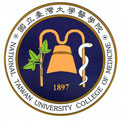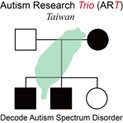News and Events
Lin CW, et. al., (2023) Light activates Ube3a, an Angelman syndrome-associated gene, by mediating the chromatin structures during postnatal development of mouse retina. Journal of Neurochemistry. Dec;167(6):766-777.
Angelman syndrome, a severe neurodevelopmental disorder, is primarily caused by mutations or deletions of maternally inherited ubiquitin protein ligase E3A (UBE3A). Activation of the silenced paternal copy of UBE3A can occur with pharmacological perturbation; however, an environmental approach has not been examined. Here, we found Ube3a is highly expressed in embryonic and early neonatal mouse retina and is maternally-, but not paternally-, expressed in ganglion cells, amacrine cells, and horizontal cells. Moreover, we analyzed UBE3A expression in the retina and visual cortex of postnatal day 28 mice (P28) following exposure to light emissions from white compact-fluorescent bulbs or blue light-emitting diodes from postnatal day 0 (P0) to 28 (P28), encompassing a crucial phase of visual system development. We found higher levels of Ube3a RNA and protein in the retina, but not visual cortex compared with tissues from P28 mice exposure to typical lighting (controls). Levels of both paternal- and maternal-UBE3A protein in mouse retina were higher than controls in P28 mice exposed to white or blue light. Moreover, levels of open and repressive chromatin structures, indicated by histone H3 lysine 4 trimethylation (H3K4me3) and histone H3 lysine 27 trimethylation (H3K27me3), respectively, were increased in the Ube3a promoter from mouse retina exposed to white or blue light. Our findings strongly suggest that extended exposure to white or blue light constitutes a substantial environmental factor that can effectively promote UBE3A expression within the central nervous system.
Here is the link: https://onlinelibrary.wiley.com/doi/full/10.1111/jnc.16018



